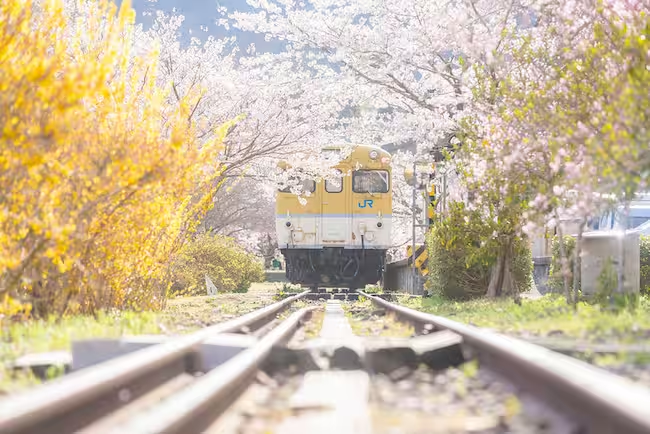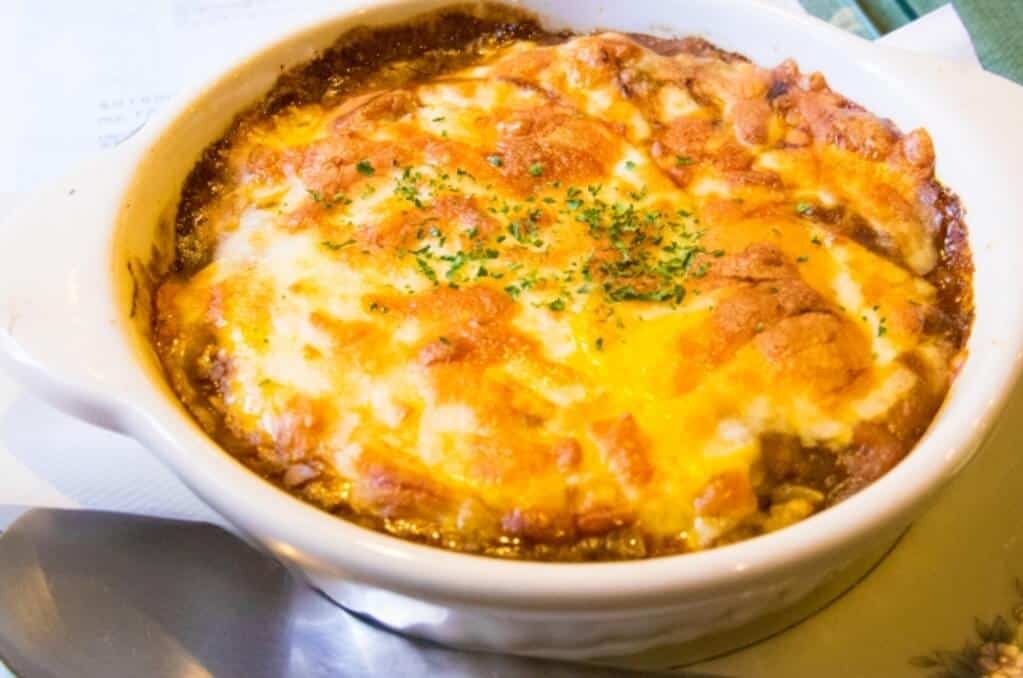¿Ha probado alguna vez la comida de Hiroshima, en Japón? La rica naturaleza de Hiroshima bendice la tierra. El tranquilo Mar Interior de Seto y las zonas del interior rodeadas por las montañas de Chugoku cultivan diversos ingredientes, formando una cultura gastronómica única.
Bendiciones del Mar Interior de Seto: la comida de Hiroshima en el mar
Cuando se habla de la cultura gastronómica de Hiroshima, no se puede pasar por alto el marisco fresco del Mar Interior de Seto. En particular, las ostras son un manjar característico de Hiroshima, y muchos turistas la visitan en invierno en busca de platos a base de ostras. Las tranquilas aguas del Mar Interior de Seto convierten a la prefectura de Hiroshima en la mayor productora de ostras de Japón, con cerca del 60% de la producción nacional.
Además de ostras, el mar ofrece abundantes capturas de temporada: la primavera trae tai (besugo) y sawara (caballa española), el verano trae anago (congrio) y pulpo. Por el contrario, el invierno ofrece un fugu (pez globo) excepcional, además de las famosas ostras. Los restaurantes y mercados locales exhiben estos tesoros marinos de diversas formas, desde el simple sashimi hasta preparaciones tradicionales como el shiokara (marisco fermentado) y el himono (pescado seco).
Ostras

La prefectura de Hiroshima es una de las principales zonas productoras de ostras de Japón, que se caracterizan por su carne grande y sabrosa. Las ostras de Hiroshima se benefician de la tranquilidad del Mar Interior de Seto y crecen en un mar rico en plancton, lo que concentra su sabor umami. Se pueden degustar crudas, y no encogen mucho cuando se cocinan, lo que permite varios métodos culinarios. Se pueden degustar diversos platos de ostras, como ostras a la parrilla, ostras fritas, olla caliente de ostras y arroz con ostras.
Anago (congrio)

El anago capturado en la bahía de Hiroshima tiene una textura regordeta y un sabor refinado. En particular, el anago capturado en los alrededores de Miyajima, en la ciudad de Hatsukaichi, prefectura de Hiroshima, se conoce como «Anago de Miyajima» y se reconoce como una anguila de marca. Es popular como anguila a la parrilla, tempura y aderezo de sushi. Entre ellos, el arroz Anago es uno de los platos gourmet locales representativos de Hiroshima
Pulpo

El pulpo capturado en el Mar Interior de Seto tiene una carne firme y elástica. En particular, el pulpo capturado en la ciudad de Mihara, prefectura de Hiroshima, es famoso como «Mihara no Tako» Se utiliza en diversos platos, como sashimi, arroz con pulpo y guisos. Se caracteriza por sus gruesas patas y firmes ventosas, y su sabor umami se extiende al masticarlo.
Ko-Iwashi (Sardinas pequeñas)

Las sardinas pequeñas, llamadas «ko-iwashi» en Hiroshima, son todo frescura. A pesar de su pequeño tamaño, este pescado es rico en umami y es un ingrediente popular en Hiroshima desde hace mucho tiempo. La gente los disfruta de muchas maneras: como sashimi, tempura y en escabeche. Para los amantes del sashimi, pruebe el «ko-iwashi sashimi», donde los cocineros mariposean el pescado para servirlo.
Comida de Hiroshima de las zonas del interior: Delicias de montaña y sabores únicos
No sólo el Mar Interior de Seto, sino también las zonas del interior rodeadas por las montañas Chugoku son ricas en manjares de montaña. Hay muchos platos exclusivos de Hiroshima que utilizan estos ingredientes. Las regiones montañosas ofrecen tesoros de temporada como las preciadas setas matsutake y maitake en otoño, y sansai (verduras silvestres de montaña) como warabi (helecho) en primavera. Las especialidades locales incluyen el tsukemono (verduras encurtidas) al estilo de Hiroshima, entre las que destaca el takana-zuke (hojas de mostaza encurtidas). El suelo fértil de la región y los limpios arroyos de montaña también favorecen el cultivo tradicional del wasabi, que se suma al rico patrimonio culinario de la zona.
Verduras de Hiroshima

Una verdura encurtida representativa de la prefectura de Hiroshima, caracterizada por su textura crujiente y sabor único. Las verduras de Hiroshima son un tipo de col china con hojas largas, delgadas y suaves. Se utilizan no sólo como encurtidos, sino también como ingredientes de bolas de arroz, salteados y coberturas para el ochazuke (arroz en té).
Limones de Hiroshima

Los limones de Hiroshima, que crecen en un clima cálido, se caracterizan por su sabor refrescante y su acidez. La prefectura de Hiroshima lidera la producción de limones en Japón y goza de reconocimiento en todo el país. Estos limones son populares para condimentar platos, así como en dulces y bebidas a base de limón. El pastel de limón, en particular, se ha convertido en un souvenir habitual de Hiroshima.
Okonomiyaki de Hiroshima

Un plato típico de Hiroshima. Los cocineros rellenan una fina masa horneada con verduras como col y brotes de soja, cerdo y fideos. Cada tienda crea su propio sabor único a través de diferentes ingredientes y métodos de cocción. El okonomiyaki al estilo de Hiroshima presenta distintas capas de ingredientes sin mezclar, y los clientes suelen comerlo con espátula.
Comidas gourmet locales que probar en Hiroshima
Okonomiyaki de Hiroshima

Características: El okonomiyaki de Hiroshima presenta una masa fina horneada con abundantes capas de repollo. La adición de fideos lo convierte en una comida abundante y satisfactoria, diferenciándolo de otros estilos de okonomiyaki.
Puntos: El okonomiyaki estilo Hiroshima lleva una salsa más dulce, personalizable con opciones picantes. Los restaurantes varían en ingredientes y métodos, por lo que resulta divertido comparar. Descubra su versión favorita de esta especialidad local.
Para más detalles, consulte el artículo sobre el okonomiyaki de Hiroshima
Platos con ostras

Características: Las ostras de Hiroshima son una piedra angular culinaria, célebre por su versatilidad. Se pueden degustar crudas para apreciar su sabor puro, a la parrilla para ahumarlas, fritas para un capricho crujiente o cocidas a fuego lento en un sabroso arroz con ostras. Estas diversas preparaciones ponen de relieve la adaptabilidad y el rico sabor de la ostra.
Puntos: Las ostras de Hiroshima son un plato imprescindible, especialmente durante su temporada alta, de diciembre a febrero. Estas delicias saladas y regordetas están en su mejor momento, ofreciendo un sabor inigualable del rico marisco de la región. No pierda la oportunidad de saborear estas delicias frescas y de temporada durante los meses más fríos.
Para más detalles, consulte el artículo sobre platos con ostras
Ramen de Onomichi

Foto de Onomichiya
Características:
Hiroshima presume de delicias de montaña más allá de su cocina del Mar Interior de Seto. Las montañas de Chugoku ofrecen delicias de temporada como setas matsutake, sansai (verduras silvestres) y verduras en escabeche únicas como el takana-zuke. El suelo fértil y los arroyos de montaña también favorecen el cultivo tradicional del wasabi, enriqueciendo el patrimonio culinario de la región.
Puntos:
El ramen de Onomichi, con su característico caldo iriko, evolucionó gracias a los fideeros locales (1955-1965). La adaptación de los fideos al clima y tiendas populares como Maruboshi & Den’yasu lo han convertido en un icono cultural, no sólo en un plato de fideos.
Para más detalles, consulte el artículo sobre el ramen de onomichi
Lemon Nabe (olla caliente)

Características:
El nabe de limón de Hiroshima es una moderna olla caliente con limones Setouchi cortados en rodajas y cocidos a fuego lento con su piel, creando un plato refrescante y caliente. Su naturaleza versátil permite variaciones japonesas, occidentales, étnicas y a base de leche, lo que lo convierte en un popular favorito de invierno.
Puntos:
El nabe de limón ofrece un sabor ligero y refrescante gracias a la acidez del limón, realzando el umami. La versatilidad de ingredientes y caldos (consomé, dashi, leche, etc.) permite diversos sabores. Su aspecto brillante y su fácil preparación con paquetes de condimentos resultan atractivos. Disfrútelo con diversos fideos e incluso con risotto.
Para más detalles, véase el artículo sobre el nabe de limón
Delicias de temporada de la gastronomía de Hiroshima
En Hiroshima se puede disfrutar de comida de Hiroshima elaborada con ingredientes de temporada durante todo el año.
Temporada de primavera

Ko-Iwashi: Las pequeñas sardinas que entran en temporada en primavera se pueden degustar como sashimi o tempura. El sashimi hecho con ko-iwashi fresco tiene una textura que se deshace en la boca.
Bro tes de bambú: Cosechados en las montañas de la prefectura de Hiroshima, los brotes de bambú se pueden disfrutar en guisos o en arroz de brotes de bambú. Los brotes de bambú recién cavados son los más deliciosos, y es importante quitarles el amargor antes de cocinarlos.
Verduras de montaña: En primavera, también se puede disfrutar de verduras de montaña como la petasita y el helecho. La amargura y el sabor únicos de las verduras de montaña las caracterizan, y la gente recomienda comerlas en tempura u ohitashi (escaldadas y sazonadas).
Temporada de verano

Erizo de mar: El erizo de mar capturado en el Mar Interior de Seto es conocido por su rico sabor. El arroz de erizo de mar hecho con erizo fresco es especialmente delicioso.
Hamo(Congrio lucio): Los chefs preparan el hamo de la temporada de verano utilizando una técnica única de «corte de espinas», creando una textura esponjosa que se puede disfrutar tanto hervido como en tempura.
Limón de Setouchi: Los limones, que entran en temporada en verano, son perfectos no sólo para bebidas y dulces, sino también para aromatizar platos. En concreto, el hielo raspado con sabor a limón es un postre refrescante perfecto para el verano.
Temporada de otoño

Matsutake: Las montañas de la prefectura de Hiroshima producen setas matsutake, que la gente disfruta en dobin mushi (tetera al vapor) o matsutake a la plancha. El aroma único que caracteriza al matsutake lo convierte en un manjar otoñal representativo.
Sanma (saurio del Pacífico): El sanma, un manjar típico del otoño, se disfruta mejor a la parrilla con sal. Es importante elegirlas frescas, y el amargor de las vísceras también es delicioso.
Ostras fritas: De otoño a invierno, las ostras crecen más y las fritas son exquisitas. Se recomienda comer las ostras fritas calientes y frescas.
Temporada de invierno

Ostras: Las ostras de temporada en invierno pueden degustarse en diversos platos, como ostras crudas, ostras a la parrilla y olla caliente de ostras. En particular, la olla caliente de ostras es un plato perfecto para calentar el cuerpo en invierno.
Jurel: En invierno, el rabo amarillo puede degustarse como sashimi o teriyaki. Tiene mucha grasa y una textura que se deshace en la boca.
Encurtidos de Hiroshima: Los encurtidos hechos con verduras de Hiroshima cosechadas en invierno son un acompañamiento perfecto para el arroz caliente. Pueden disfrutarse no sólo como guarnición, sino también como cobertura del ochazuke o como ingrediente de las bolas de arroz.
Lo más destacado de la comida de Hiroshima
La región presume de una cultura gastronómica que combina la rica generosidad del Mar Interior de Seto con la de las montañas. El marisco fresco, especialmente las ostras de Hiroshima, es el sabor característico de la región, y también abundan las especialidades locales únicas, como el okonomiyaki al estilo de Hiroshima y otros alimentos de Hiroshima. La escena gastronómica de Hiroshima también celebra los ingredientes de temporada en platos tradicionales. Cuando visite Hiroshima, no deje de saborear estos inconfundibles sabores locales.
















コメント